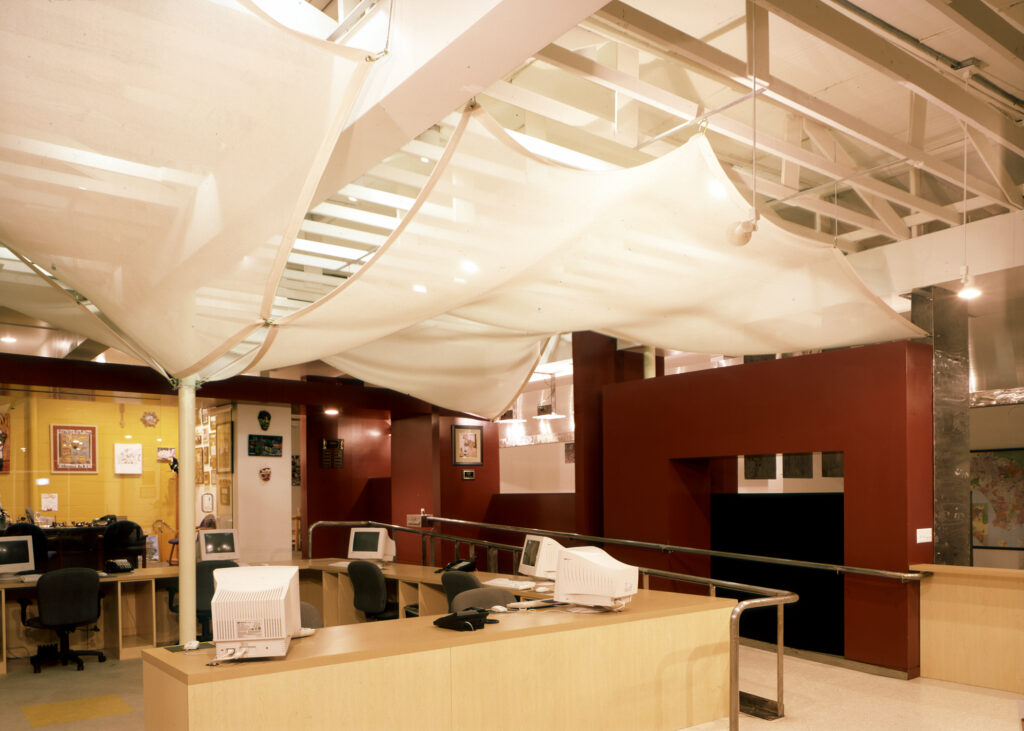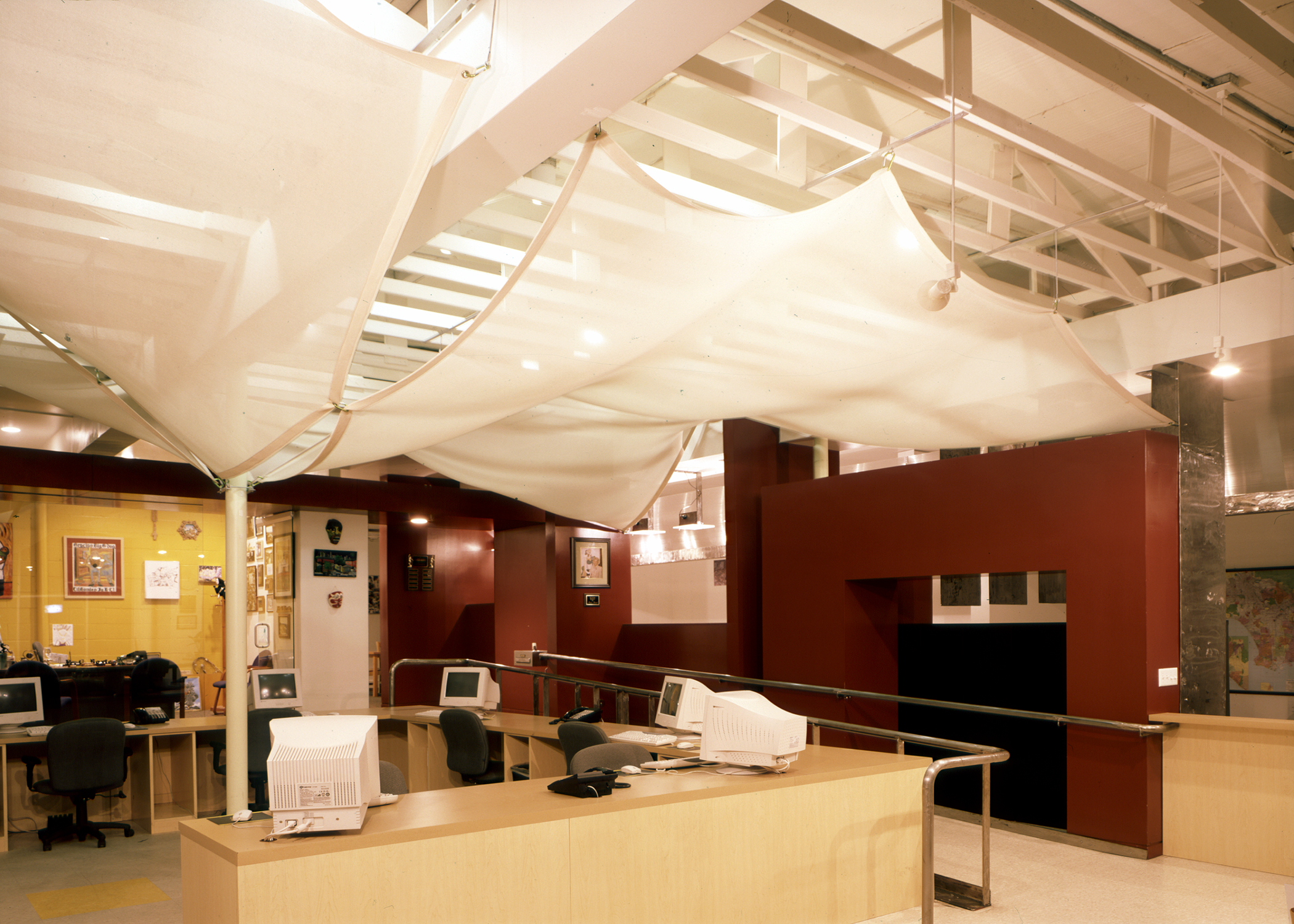
The subtle use of scrim forms a cross, the center’s only religious iconography. ©Dan Pitera/Detroit Collaborative Design Center
| Location | Los Angeles, California |
| Date | 2000–2001 |
| Client | Jobs for a Future |
| User Client | Former gang members and prostitutes |
| Architect | Sander Architects, Los Angeles; Whitney Sander, principal |
| Design Team | Dan Pitera, Kelly Powell, David Garnet (Detroit Collaborative Design Center) |
| Contractor | Ruiz Construction, Inc. |
| Cost | $300,000 |
| Area | 4,628 sq. ft./430 sq. m |
In 1992 a Jesuit priest started Homeboy Industries for gang members from Los Angeles who wished to start afresh.
With slogans like “Jobs, Not Jails” and “Nothing Stops a Bullet Like a Job,” Father Gregory Boyle (or G-dog, as ex-gang members call him) designed the center to provide job training for gang members, many from rival groups, and help them fi nd work.
By the late 1990s the center needed a bigger space, and Boyle contacted Father Terrence Curry, a fellow Jesuit who was then the director of the Detroit Collaborative Design Center, a community design studio based at the University of Detroit Mercy. The call came as Curry was moving on to a new position in New York, but the center’s new director, Dan Pitera, embraced the project.
Working with the LA-based architect Whitney Sander, the team held a series of workshops with stakeholders, including former gang members, on the planning and design of the space, which would contain an X and a Y(see mention 3 paras. below). This engagement continued long into the project, as Ruiz Construction employed ex-gang members to work on the new center from demolition to construction. As soon as they saw the site, the architects knew that the way the center engaged the street would be a critical component of its design—and ultimately its success.
Most buildings in the neighborhood were boarded up or covered in security bars. Drive-by shootings were not uncommon. In an act of defiance, the designers chose to draw attention to these basic safety and security issues. “There is always a fear when taking boys away from gangs and women away from pimps [that] there would be retaliation,” Pitera explained. “The space was filled with bars and rolling security gates. It [signaled] fear and to keep out. We wanted to create an unflinching, fearless approach to openness.”
Rather than creating barriers between the building and the street, Homeboy Industries removed all the security elements and replaced them with large bulletproof-glass windows. In an act of solidarity and a show of resilience, Homeboy and Homegirl meetings take place right in front of the windows for all the neighborhood to see.
Architecturally, one of the major challenges was connecting the duplex and the printing facility, which were built on different levels. A number of the Homeboys and -girls are disabled due to gang-related violence. So instead of hiding wheelchair access off to the side, the team decided to celebrate it, creating a ramped spine that wraps around a central, columned, canopied space where Homeboys and Homegirls work.
This central space is the only area where you find any hint of a religious connection. It was important to Father Boyle to bring a sense of spirituality to the space without sending any overtly religious messages. “We created a canopy made from four pieces of theater scrim. When the lights shine on them, a cross appears in the negative space,” Pitera said. “I doubt many of the kids even know it’s there.”
What started as a small nonprofit determined to create a safe place for recovering gang members is now a $3 million organization. It runs five businesses of its own, including a silk-screening operation, a landscaping service, and a café, and even offers free tattoo removal for former gang members. Homeboy Industries’ core mission, however, remains finding jobs for former gang members and convicts in businesses willing to take a chance on young people at risk.


The expanse of bulletproof glass opens the space to the street, advertising the work being done on the inside. ©Dan Pitera/Detroit Collaborative Design Center
















READ OR LEAVE A COMMENT